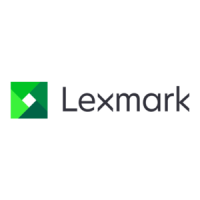Bar code descriptor for MicroPDF417
53
• For modes 2 and 3, the postal code, country code, and class of service fields must follow the label fields.
Each field must be terminated with either a comma or GS.
• A mode 2 postal code can have 0 to 9 digits. Postal codes greater than 9 digits will be truncated. For
country code 840 (USA), postal codes of length 5 will be padded with 4 zeros.
• A mode 3 postal code can have 0 to 6 alphanumeric characters (any printable character in code set A as
defined in AIM spec). Codes longer than 6 characters will be truncated. Codes shorter than 6 characters
will be padded with spaces.
• The country code and class of service must each be 3 digits in length and will be padded with leading
zeros if necessary.
• For modes 2 and 3, an optional ANSI message header (for example, [)>RS
01GSyy) can be inserted prior
to the postal code (RS
= record separator, ASCII 30; yy is a two-digit year). This message is automatically
moved to the secondary message. Neither a group separator nor a comma can terminate this message.
An optional secondary message follows the class of service for modes 2 and 3. For modes 4, 5, and 6, the
message follows the number-of-labels field.
MaxiCode examples
Here are some MaxiCode examples of the ASCII data that will be sent with the transfer bar code
data command:
Mode 2, separated by commas:
ESC
&y48W1,1,40361,840,001,This is the secondary message.
Mode 3, separated by commas:
ESC
&y48W1,1,ABC01,840,001,This is the secondary message.
Mode 3, separated by GS and commas plus optional ANSI message header (yy = 99):
ESC
&y44W1,1,[)RS01GS99ABC01GS840GS022GSsecondary message.
Mode 4, separated by commas:
ESC
&y29W1,1,Here is a mode 4 message.
Bar code descriptor for MicroPDF417
The MicroPDF417 is a multi-row symbology based on PDF417 and is used for small area
applications that require greater area efficiency but lower data capacity than PDF417. MicroPDF417
is distinctive from PDF417 in that the symbol may only be produced within specific row, column and
error correction codeword combinations, up to a maximum of four data columns by 44 rows. A
specific and limited set of symbol sizes is available, each size including a fixed level of error
correction.
MicroPDF417 provides the following encoding modes:
• Text
—This is used when encoding general text.
• Numeric
—This is used to encode data consisting of numbers only.
• Byte
—This allows for the first 127 ASCII characters but with a reduced level of efficiency.
Four symbol widths are permitted, each specifying the number of data columns (1–4). Within each
symbol width, a variable number of rows (4–44) provide maximum data capacity for the following
modes:

